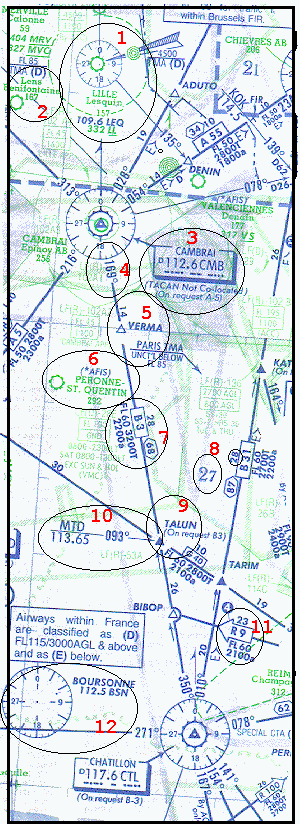Some navigation dedicated sitesHundreds major-airports and approach sheets at one Swedish site. Lot's of USA navigational data All about ALLNAV: My missing navaids scenery, giving you all navaids of the world in one file. Collection with many Hawaii (985Kb) approach sheets and Caribbean (1,5Mb) approach sheets in *.jpg format. An Austrian site with lot of official Austrian navigational information. VFR and IFR! USA VFR charts online! |
|
|
Sample chart
Below you will find a part of the Jeppesen European low altitude chart (5-6). It shows a area north of Paris between Lille and Chatillon. In this lesson I will show you some basic information that can be found on these charts. To make it clear where it's all about I added some circles and red numbers. The numbers are referring to the left part of this page, which shows the meaning of the symbols. Just check it out and take the time for it. If you don't like to do it online, just save this page and it's image and do it off-line.
If you have a printer (and better a color printer) print this page and start flightsimulator. You can get a little experience after reading the complete text next to the image below:
Place yourself in slew mode (press Y)at Cambrai VOR (N50:13:42 E003:09:06) and put 112.6 frequency at NAV1. Check the distance (should be zero or near to zero).
Now put 117.6 (Chatillon VOR at the bottom of the image) and try to figure out the heading to this beacon at your instruments.


